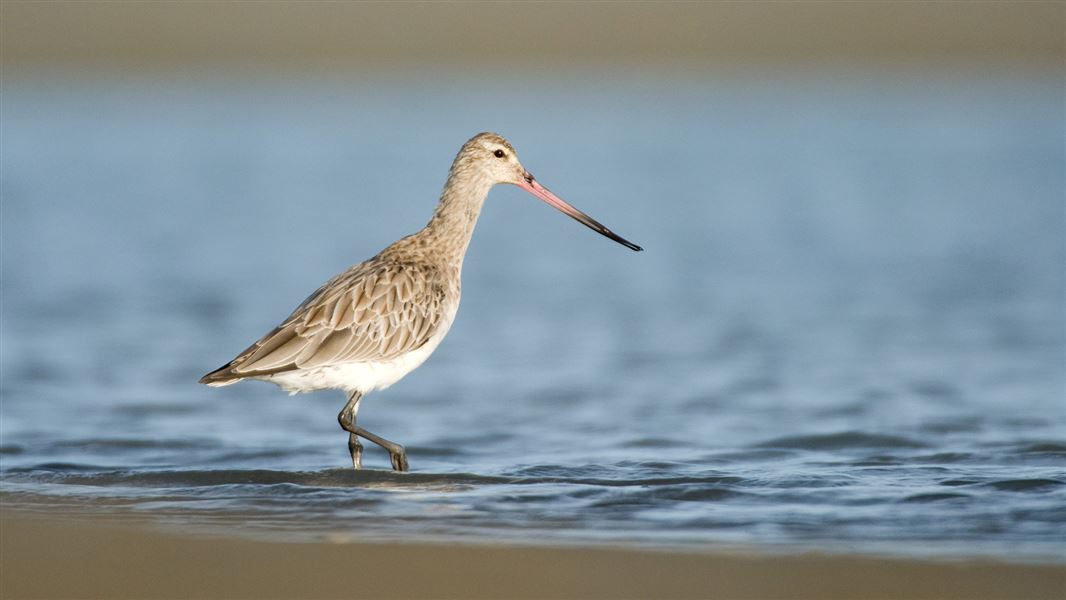Archived content: This media release was accurate on the date of publication.
Date: 03 November 2023
Every spring, around 75,000 of these half kilogram, brown-grey, long-beaked shore birds fly approximately 12,000km from Alaska and the Arctic to New Zealand, with around 4000 of them landing on Southern coastal areas.
DOC Biodiversity Supervisor Sean Jacques says this annual migration is one of the most impressive in the animal kingdom.
“Bar-tailed godwits — along with other migratory waders — travel phenomenal distances from the northern hemisphere all the way to Southland every year.
“Cross-Pacific flights usually conjure images of albatross and other large seabirds rather than a godwit, or the sparrow-sized red-necked stint which travel to Southland from north-eastern Siberia,” Sean says.
“It’s really important for people visiting coastal areas like Awarua, Waituna and New River Estuary to make sure you’re giving all shore birds space to rest and recuperate.
“They need to restore energy following their arrival, build up reserves for the return trip, and are highly vulnerable to disturbance throughout their time here.”
People can help by keeping their dogs under control, especially during high tides when the birds are roosting, and digesting the marine worms they travelled all this way to feed on. People should also be mindful of where they drive as waders can be difficult to spot until it’s too late.
The Tiwai sandspit at Awarua Bay is of particular importance as an officially designated Wildlife Refuge, which is one of the highest levels of protection for an ecosystem in New Zealand. It’s also an important site for the critically endangered Southern New Zealand Dotterel, population just 126 at last count.
“This means visitors should not be taking dogs here or driving vehicles or quad bikes in this location,” Sean says.
“We’re developing signage for the area to ensure all visitors understand the rules, and most importantly, what’s at stake.”
Updating the signage is one part of DOC’s work to raise awareness of the vulnerable and unique species that use the wider Awarua area. The coastal region is a popular spot for recreation like duck shooting, whitebaiting and fishing.
“Southlanders generally take real pride in our outdoor environments and most people want to recreate sensibly,” Sean says.
“We want to ensure everyone has the right information so they can enjoy the area without harming the threatened native species that reside there.”
Contact
For media enquiries contact:
Email: media@doc.govt.nz
